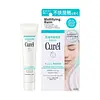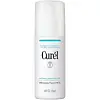What's inside
What's inside
 Key Ingredients
Key Ingredients

No key ingredients
 Benefits
Benefits

 Concerns
Concerns

 Ingredients Side-by-side
Ingredients Side-by-side

Dimethicone
EmollientSilica
AbrasiveCI 77120
Cosmetic ColorantHydrogenated Polyisobutene
EmollientButylene Glycol
HumectantGlycerin
HumectantSqualane
EmollientVinyl Dimethicone/Lauryl Dimethicone Crosspolymer
Water
Skin ConditioningDipropylene Glycol
HumectantCetyl-Pg Hydroxyethyl Palmitamide
Skin ConditioningDextrin Palmitate
EmulsifyingEucalyptus Alba Leaf Extract
Skin ConditioningPEG-10 Dimethicone Crosspolymer
StabilisingHydroxyundecanoic Acid
Skin ConditioningPullulan
Cholesterol
EmollientSodium Methyl Stearoyl Taurate
CleansingPEG-60 Hydrogenated Castor Oil
EmulsifyingSuccinic Acid
BufferingZinc Oxide
Cosmetic ColorantDimethicone, Silica, CI 77120, Hydrogenated Polyisobutene, Butylene Glycol, Glycerin, Squalane, Vinyl Dimethicone/Lauryl Dimethicone Crosspolymer, Water, Dipropylene Glycol, Cetyl-Pg Hydroxyethyl Palmitamide, Dextrin Palmitate, Eucalyptus Alba Leaf Extract, PEG-10 Dimethicone Crosspolymer, Hydroxyundecanoic Acid, Pullulan, Cholesterol, Sodium Methyl Stearoyl Taurate, PEG-60 Hydrogenated Castor Oil, Succinic Acid, Zinc Oxide
Water
Skin ConditioningGlycerin
HumectantCetyl-Pg Hydroxyethyl Palmitamide
Skin ConditioningDimethicone
EmollientNeopentyl Glycol Dicaprate
EmollientSqualane
EmollientPolysorbate 60
EmulsifyingButylene Glycol
HumectantSorbitan Stearate
EmulsifyingCholesterol
EmollientCholesteryl Isostearate
EmollientAllantoin
Skin ConditioningCetyl Alcohol
EmollientSodium Methyl Stearoyl Taurate
CleansingStearyl Alcohol
EmollientSuccinic Acid
BufferingBis-Methoxypropylamido Isodocosane
EmollientEucalyptus Globulus Leaf Extract
PerfumingMethylparaben
PreservativeWater, Glycerin, Cetyl-Pg Hydroxyethyl Palmitamide, Dimethicone, Neopentyl Glycol Dicaprate, Squalane, Polysorbate 60, Butylene Glycol, Sorbitan Stearate, Cholesterol, Cholesteryl Isostearate, Allantoin, Cetyl Alcohol, Sodium Methyl Stearoyl Taurate, Stearyl Alcohol, Succinic Acid, Bis-Methoxypropylamido Isodocosane, Eucalyptus Globulus Leaf Extract, Methylparaben
 Reviews
Reviews

Ingredients Explained
These ingredients are found in both products.
Ingredients higher up in an ingredient list are typically present in a larger amount.
Butylene Glycol (or BG) is used within cosmetic products for a few different reasons:
Overall, Butylene Glycol is a safe and well-rounded ingredient that works well with other ingredients.
Though this ingredient works well with most skin types, some people with sensitive skin may experience a reaction such as allergic rashes, closed comedones, or itchiness.
Learn more about Butylene GlycolWe don't have a description for Cetyl-Pg Hydroxyethyl Palmitamide yet.
Cholesterol is a class of organic molecules called lipids. It helps hydrate your skin and is essential to having a healthy skin barrier.
Our skin naturally contains cholesterol in the outermost layer. Besides cholesterol, it also contains ceramides and fatty acids. Cholesterol makes up about 1/4 of your skin's outer layer and barrier. Your skin barrier is responsible for keeping allergens and microbes out. Having a healthy skin barrier is also responsible for keeping your skin firm and plump.
Our bodies use cholestrol to create vitamin D, steroid hormones, and more.
Learn more about CholesterolDimethicone is a type of synthetic silicone created from natural materials such as quartz.
What it does:
Dimethicone comes in different viscosities:
Depending on the viscosity, dimethicone has different properties.
Ingredients lists don't always show which type is used, so we recommend reaching out to the brand if you have questions about the viscosity.
This ingredient is unlikely to cause irritation because it does not get absorbed into skin. However, people with silicone allergies should be careful about using this ingredient.
Note: Dimethicone may contribute to pilling. This is because it is not oil or water soluble, so pilling may occur when layered with products. When mixed with heavy oils in a formula, the outcome is also quite greasy.
Learn more about DimethiconeGlycerin is already naturally found in your skin. It helps moisturize and protect your skin.
A study from 2016 found glycerin to be more effective as a humectant than AHAs and hyaluronic acid.
As a humectant, it helps the skin stay hydrated by pulling moisture to your skin. The low molecular weight of glycerin allows it to pull moisture into the deeper layers of your skin.
Hydrated skin improves your skin barrier; Your skin barrier helps protect against irritants and bacteria.
Glycerin has also been found to have antimicrobial and antiviral properties. Due to these properties, glycerin is often used in wound and burn treatments.
In cosmetics, glycerin is usually derived from plants such as soybean or palm. However, it can also be sourced from animals, such as tallow or animal fat.
This ingredient is organic, colorless, odorless, and non-toxic.
Glycerin is the name for this ingredient in American English. British English uses Glycerol/Glycerine.
Learn more about GlycerinWe don't have a description for Sodium Methyl Stearoyl Taurate yet.
Squalane is an emollient that helps the skin hold onto moisture. It's an oily liquid that occurs naturally in certain types of fish and plant oils.
Because squalane boosts hydration in the skin, it also comes with plenty of benefits: it is an antioxidant and can help fight free radicals and skin damage. Squalane is also found to have a detoxifying effect when applied.
Squalane comes from squalene, which occurs naturally within the sebum of our skin. It is one of the oils our skin produces to keep itself hydrated. Squalane is the hydrogenated version of squalene and has a longer shelf life.
Research shows that squalane is non-irritating (even at 100% concentration).
In general, it's a fantastic ingredient. It does a great job at hydrating the skin, and it's suitable for those with sensitive skin.
The source of squalane may impact malassezia / fungal acne. This is because olive oil derived squalane can contain impurities such as fatty acids and plant waxes. Sugarcane derived squalane is recommended for anyone with malassezia concerns.
Is squalane vegan?
This depends on the source. Squalane can be derived from both plants and animals. Most squalane used in skincare comes from plants.
Please note: the source of squalane is only known if disclosed by the brand. We recommend reaching out to the brand if you have any questions about their squalane.
Read more about squalene with an "e".
Is squalane an oil?
Squalane is often called an oil, but it’s technically not; it’s a hydrocarbon, meaning it’s only made of carbon and hydrogen, unlike true oils which are triglycerides made of fatty acids and glycerol.
The term “oil-free” isn’t regulated, so companies can define it however they want. Some exclude all oils, while others just avoid mineral oil or comedogenic oils.
While some people avoid oils thinking they cause breakouts, the right kind of oil (or oil-like ingredient like squalane) can actually help balance and hydrate your skin. It’s worth testing out simple oils or squalane to see what works best for your skin.
Learn more about SqualaneSuccinic acid is an odorless white powder. It is naturally found in our bodies but can also be derived from living organisms.
Succinic acid is water-soluble. The pH level of this ingredient is between 4.2 and 5.6.
While succinic acid posesses antimicrobial, antioxidant, and anti-inflammatory properties, these properties have not been studied in skincare products.
Fun fact: Succinic acid was known as the 'spirit of amber' in the past. This is because it used to be derived from distilling amber.
Learn more about Succinic AcidWater. It's the most common cosmetic ingredient of all. You'll usually see it at the top of ingredient lists, meaning that it makes up the largest part of the product.
So why is it so popular? Water most often acts as a solvent - this means that it helps dissolve other ingredients into the formulation.
You'll also recognize water as that liquid we all need to stay alive. If you see this, drink a glass of water. Stay hydrated!
Learn more about Water